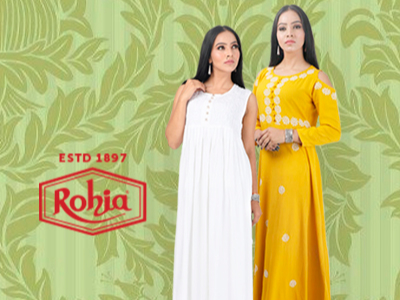The fine and intricate detailing of the delicate Chikankari embroidery has come a long way since the time of the Mughals in India. Crafted with fine threads on silky muslin fabric, this intricate embroidery work is a complete style statement in itself. India has a lot more embroidery styles to offer. Among them, Chikankari embroidery has earned an incredibly significant position not only in the Indian fashion industry but also internationally.
Admired and celebrated by people worldwide, this specific embroidery motif has successfully made its way into everybody’s wardrobe. Even though this embroidery style is widely popular, not many are aware of the inspiring history of the Chikankari embroidery. Here is everything you should know about the fascinating history of the evergreen and beautiful Chikankari embroidery.
The history of Chikankari
The city of Lucknow, which happened to be the capital of the Mughal emperor in the late 18th century, held a rich heritage of art and culture. Filled with incredibly skilled craftsmen and artisans, the world-renowned and elegant Chikankari embroidery saw the light of the day at the heart of Lucknow.
This gorgeous embroidery pattern comprising timeless elegance and charm beholds immense inspiration from the fascinating Mughal art and architecture. After the Mughals, the contribution of the Nawab of Awadhs in popularising the Chikankari work is commendable.
Since the Nawabs had an excellent admiration for art and craft, Chikankari embroidery made its way into their hearts, thereby receiving more recognition all around India. This sophisticated artistic creation of Lucknow has many takers worldwide and its craze continues to proliferate among the ardent patrons of Chikankari attires the world over.
Evolution and development of this embroidery style
In ancient times, the meticulously crafted Chikankari embroidery was confined only to white muslin fabric and white thread. However, with its persistent evolution and development over time, artisans introduced new vibrant colours and fabrics. This embroidery style achieved special recognition during the 19th-century British rule in India. The British patrons were greatly fascinated by the uniqueness and diversity of Chikankari.
Immensely mesmerised by the gorgeous yet unique design patterns, the British colonial rulers started implementing them in their outfits. This is when the Chikankari work started acquiring worldwide recognition as an incredibly valuable treasure of Indian handicrafts. In the current times, Chikankari embroidery is not only confined to traditional outfits but has paved its path into contemporary fashion as well.
Earlier, craftsmen used only muslin fabric to make Chikankari stitches. At present, the artisans apply it to a wide range of fabrics such as silk, cotton, denim, and much more! All thanks to the gracefulness of this embroidery; designers all around the world are working immaculately to preserve and promote its legacy and heritage.
Types of Chikankari embroidery stitches
Here is a look at different types of Chikankari embroidery stitches that the expert craftsmen use to make their look out of the world.
Tepchi
Acting as the foundation of the Chikankari work, this simple form of stitch helps to make simple shapes and figures using six strands on the fabric’s right side. It involves a simple long-running stitch. The simple and versatile Tepchi contributes significantly to the elegance of Chikankari through complex designs and patterns on the fabric.
Bakhiya
Designed to form a herringbone style and done on the wrong side of the fabric; Bakhiya involves a double back or shadow stitch in the fabric. Experts use this daisy-shaped stitch to fill the centres of floral and other complex patterns. The small and dense stitches that form a raised and textured surface give the appearance of a visually soothing 3-D effect.
Jaali
Master craftsmen create this mesh-like pattern with utmost caution to make both sides of the outfit look equally presentable. It comes handy in creating entrancing designs on Chikan kurtas, dupattas, sarees, and other attires through eyelet stitches, also termed openwork. It contributes appreciably to the splendour of Chikankari handwork. It requires the artisans to work with utmost precision, making them exhibit their true craftsmanship.
Bottomline
The exquisite Chikankari embroidery design is one of the most valuable and internationally celebrated treasures of the fashion industry. It is the ultimate result of the intricate thread design blending with the superior creativity skills of the consummate craftsmen.
The meticulously designed Chikankari embroidery is an extraordinary creation of the skilled Lucknowee craftsmen of the Mughal Empire. This hand-embroidered work witnessed a significant rise during the Mughal period. Since the 19th century, it has gained a lot of admiration.
The rich heritage and legacy of the popular Chikankari embroidery paved its way further into the current times with the same admiration that it earned in the erstwhile times. Due to its timeless beauty and sophistication, it is now an integral part of the contemporary fashion industry as well. People just love adorning Chikankari kurtas, sarees, lehengas, and other outfits on the most happening occasions as well as while at home.
